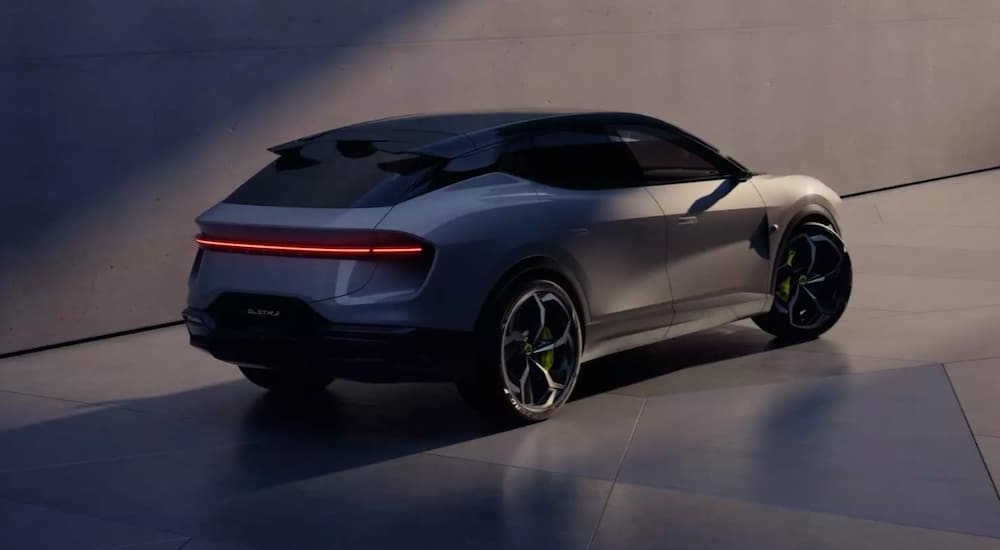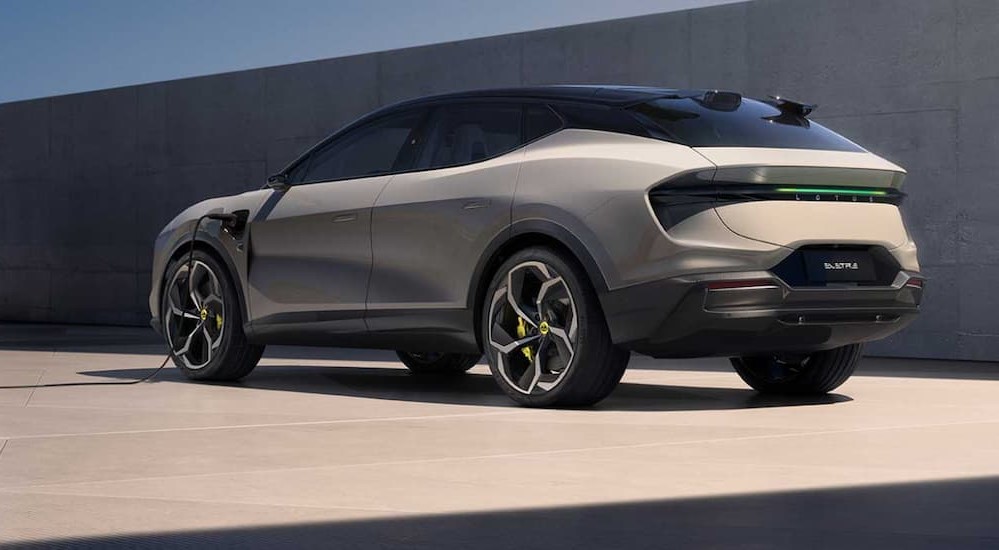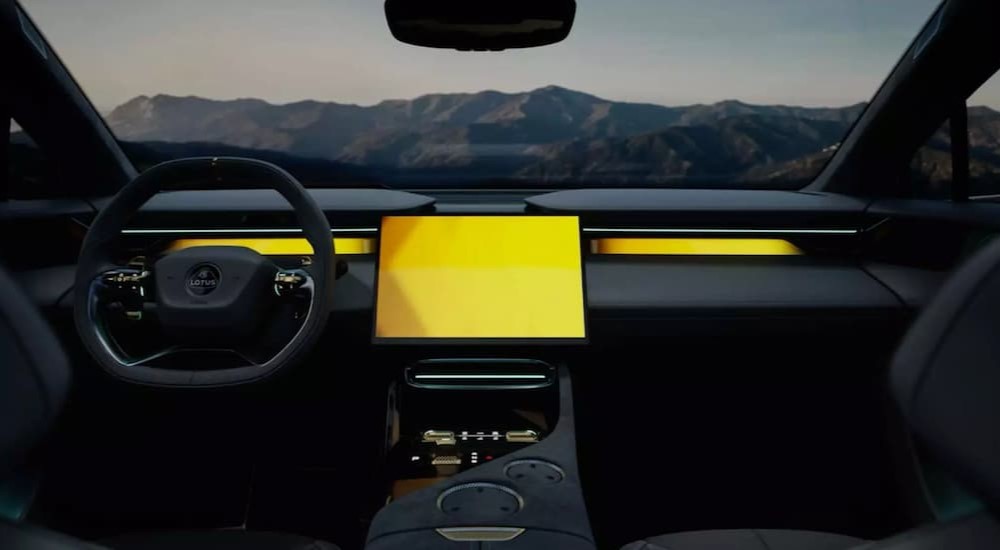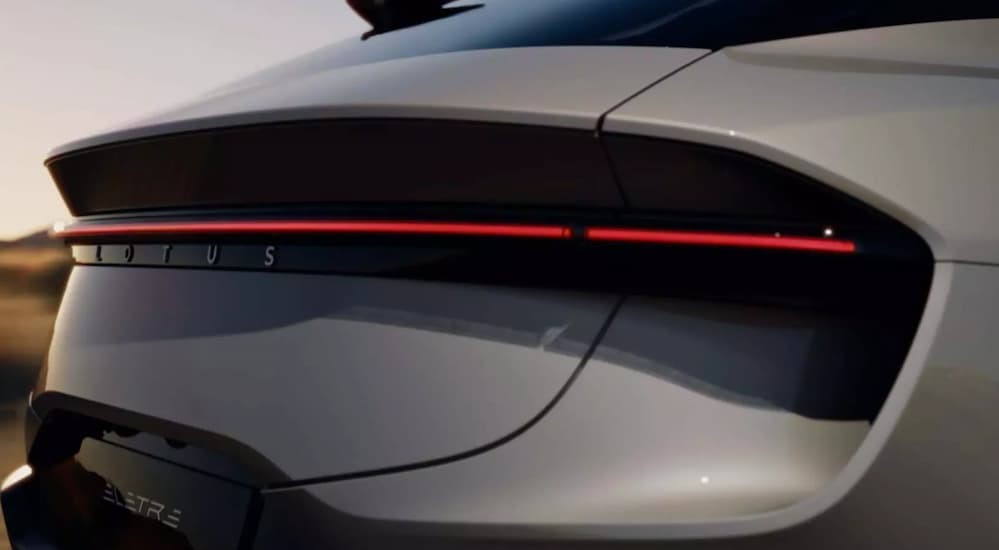Mysteriously named for a beautiful flower that symbolizes overcoming adversity, Lotus Cars has overcome more than its fair share since being founded by Colin and Hazel Chapman in an unused horsebarn 75 years ago. It wasn’t always that way. In fact, Lotus is the most influential automaker that my wife has never heard of. Derivations of the very first Lotuses, Chapman’s personally-modified Austin 7s, continue to be produced under the Caterham name today. Lotus was the first to claim seven Formula One Constructors Championships, and won its seventh championship four years sooner than Ferrari, despite the latter’s head-start of four years and two titles. Even amidst the brand’s modern struggles, the Elise was responsible for not only keeping Lotus alive, but it was also the platform for some of the most significant cars of this century, the world-record-setting Hennessey Venom GT and the car that kickstarted the greatest automotive paradigm shift since the assembly line: the Tesla Roadster.
However, since Colin’s untimely death amidst a fraud crisis that threatened to sink the company back in the 1980s, Lotus has changed hands at least five times, and has lived perpetually on the brink of extinction, despite the success and acclaim of the long-lived Esprit and Elise. Synonymous with Colin Chapman’s philosophy to “simplify, then add lightness,” Lotus was also synonymous with typical British sports car quality and reliability issues. Poor practicality, low serviceability, and a dearth of features have made most Lotus models inappropriate choices for the first, second or even third spot in most folks’ garages. If you’ve had an eye on the news lately, though, you might have heard about the new Lotus Eletre, and noticed that it’s a little bit different. What does this mean for the future of Lotus?

Vision80
It means that Geely, the fast-growing Chinese automotive giant with majority control of Lotus, is flexing their influence and experience to turn Lotus into a self-sustaining profitable venture. This is evident in the company’s ten-year strategic plan called Vision80, which is currently at its halfway point. Consisting of three pillars, the vision is to make Lotus a global performance car brand by:
- Delivering results every year
- Revolutionizing the product range
- Transforming the entire business
To pillars #1 and #3, Lotus has promoted from within and without to load up leadership positions with marketing and design talent, with four major hires and promotions in the last year alone. The idea is to increase the influence of design within the business, and to collaborate across divisions to develop exciting lifestyle vehicles with global appeal.
This leads us back to #2. While retaining Lotus DNA by creating fun, lightweight performance vehicles, Geely is also leveraging their experience with connectivity and advanced driving assist technology to elevate those vehicles to a new plane. The standards of today’s sports and luxury markets must be met, and new models must be marketable to the United States and China. In other words, the cars need to be viable first or second-slot options for people. In today’s market, that means they might not be traditional sports cars at all.
Driving Change
Allow me to pivot to the latest development in the progress of Vision80. Lotus’ new Environmental, Social and Governance (ESG) charter, “Driving Change,” arrives as they celebrate their 75th anniversary. As with many other automakers, Lotus is making commitments to building a better world through their actions, including:
- Inspiring new generations through education and global outreach
- Putting Lotus personnel at the heart of global sustainable growth priorities
- Achieving certification as a net-zero business by pursuing SBTis (Science-Backed Target initiatives)
- Ensuring all new mainstream Lotuses from 2023 are full EVs
Hence, the Eletre. The change has already begun. The Evija hypercar is fully electric, and the Emira (which, by the way, addresses a major reliability concern by using a Toyota Camry V6, like the Evora before it) is the last gasoline-powered Lotus, period. This commitment has set Lotus on the path to becoming “the first established sports car maker in the world to have a fully electric product range.” This is no small feat, even for a marque that made fewer than 1,800 vehicles in 2021.
The point is, in order for the brand to survive and to maintain relevance in a changing market space, they needed to heavily revise how they were doing things. The upcoming lineup of Lotus Types 132-135 is proof that they are taking this challenge very seriously. According to Mike Johnstone (VP, Commercial), “[The EVs are] engineered from the beginning to look, feel and drive like a Lotus.” Let’s take a look at how that’s shaping up.
Type 132: Eletre
Derived from the Hungarian word for “coming to life”, the Eletre is the first Lotus crossover, and definitively represents the (re)birth of the brand in the era of electrified vehicles. Fitting in the same space as a Tesla Model X (and not a whole lot else), Lotus delivers the Eletre with 603-905 hp and up to 373 miles of (Euro-rated) electric range. Striking looks that combine the Emira with the Lamborghini Urus are loaded with aggressive active and passive aerodynamic features that bring the crossover’s drag coefficient down to 0.26, a match for the decidedly minimalist Model X. Along with this comes a shockingly well-appointed interior, with sculpted surfaces, fine materials, and exciting technology, including optional cameras in place of side mirrors.
Targeting a market of high-end electric SUV shoppers (the Eletre’s starting price is well above the BMW iX, Genesis GV70, Rivian R1S, and Audi e-Tron), Lotus has delivered a product that seems to be worth the money both as a fun vehicle and as a daily driver. May this be a sign of great things to come from its as-of-yet unnamed siblings.
Type 133
Lotus has trademarked the names Etude and Envya, virtually guaranteeing that one of these will adorn the Type 133 upon its official reveal to the world. Built on the Eletre’s platform but designed as an executive sedan (a la Porsche Taycan), spy shots of a Type 133 at the Nurburgring show it smoking tires, a clear indication that it’ll share the Eletre’s optional 905-horsepower powertrain. With a similar interior, it’ll be sure to slot in as a reasonable alternative to the Taycan, Model S Plaid, and Lucid Air Sapphire, ideally making it attractive enough to establish goodwill among the adventurous buyers occupying that market space.
Type 134
The Type 134 is the vehicle upon which hangs Lotus’ hopes and dreams. Conceptualized as a compact crossover, Type 134 will be on a new, smaller platform than the Eletre, and is targeting sales of 75,000 units per year as an entry-level EV for the brand. To be fair, this isn’t ridiculously ambitious–it’s only 10% of what the Model Y shipped in 2022–but they’re also hoping to outpace the Mustang Mach E with this car.
In contrast, Lotus as a brand has barely sold 100,000 vehicles in 75 years, so the Type 134 represents a massive shift in mentality. Diving into the most popular segment in the largest markets in the world is surely the right way to go about it. Much as Tesla used the Roadster and then the Model S to get around the “EV tax”, raising capital and goodwill to launch the wildly successful Model 3, expect the Type 134 to learn from the lessons of the Eletre and be every bit the hit that Lotus is counting on.
Type 135
In case you’re wondering where Lotus’ traditional sports car DNA has gone in this sea of electric passenger vehicles, the Type 135 is it. Despite the global distribution of the development and production of the other models, the Type 135 is being designed and will be built in Lotus’ classic stomping grounds at Hethel, Norfolk, UK, likely at the brand new state-of-the-art Chapman Production Center. This vehicle is allotted to this traditional Lotus nursery because it’s the one destined to succeed the Emira as Lotus’ flagship two-seater sports car.
It will reportedly be the first on Lotus’ Lightweight Electric Vehicle Architecture (LEVA), which bucks the underfloor battery trend by mounting it behind the passengers instead. Target numbers include 470 hp and 3,300 lbs, Model 3 dual-motor power, with the mass of a Nissan LEAF, restoring the Lotus maxim of adding lightness. Though I understand why we need the Eletre, Type 133 and Type 134, this will be the electric Lotus we deserve.
The Enduring Beauty of a Lotus
Car and Driver has taken what I think is a great stab at naming the Type 135. Playing off the platform’s name and fitting within the unbroken Lotus naming convention, the word which means “to raise” in most romantic languages is “eleva.” As the vehicle surely intended to elevate the purest form of Lotus DNA in a transformed era of electric cars, I think that name is perfect.
Lotus’ future hasn’t always been bright, despite their incredible success in the early days and their outsized influence on the industry throughout the last 75 years. I appreciate that there’s something sad about the loss of independence and the need for this “sold-out” reinvention, but in order to make great, exciting performance cars (which tend to be highly unprofitable), Lotus needs to make money somehow.
The Eletre indicates a remarkable first step towards achieving this by presenting a Lotus that looks and feels like it should cost as much as it does, something that appeals to commuters and enthusiasts alike. If the Types 133-135 are to be anything like it, I can’t wait to see what’s in store for Vision90.






